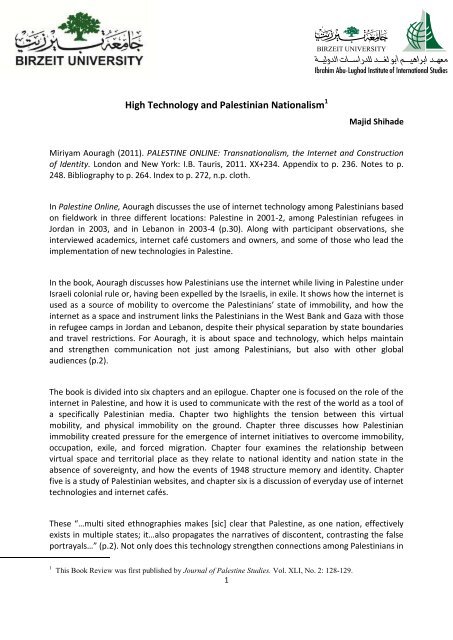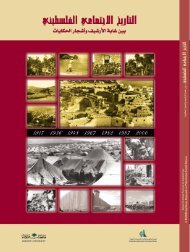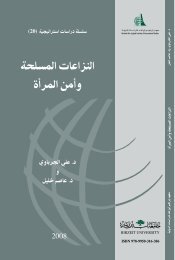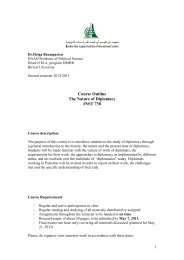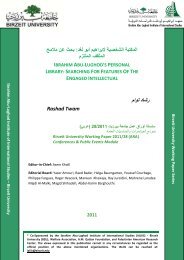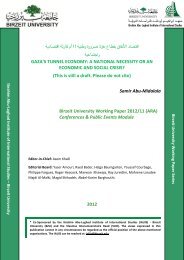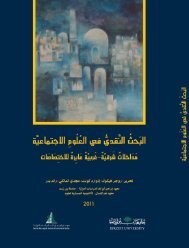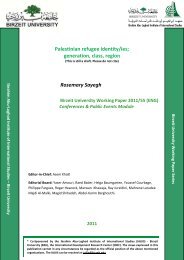Majid Shihade Birzeit University Working Paper 2012/9 (ENG) Book ...
Majid Shihade Birzeit University Working Paper 2012/9 (ENG) Book ...
Majid Shihade Birzeit University Working Paper 2012/9 (ENG) Book ...
Create successful ePaper yourself
Turn your PDF publications into a flip-book with our unique Google optimized e-Paper software.
High Technology and Palestinian Nationalism 1<strong>Majid</strong> <strong>Shihade</strong>Miriyam Aouragh (2011). PALESTINE ONLINE: Transnationalism, the Internet and Constructionof Identity. London and New York: I.B. Tauris, 2011. XX+234. Appendix to p. 236. Notes to p.248. Bibliography to p. 264. Index to p. 272, n.p. cloth.In Palestine Online, Aouragh discusses the use of internet technology among Palestinians basedon fieldwork in three different locations: Palestine in 2001-2, among Palestinian refugees inJordan in 2003, and in Lebanon in 2003-4 (p.30). Along with participant observations, sheinterviewed academics, internet café customers and owners, and some of those who lead theimplementation of new technologies in Palestine.In the book, Aouragh discusses how Palestinians use the internet while living in Palestine underIsraeli colonial rule or, having been expelled by the Israelis, in exile. It shows how the internet isused as a source of mobility to overcome the Palestinians’ state of immobility, and how theinternet as a space and instrument links the Palestinians in the West Bank and Gaza with thosein refugee camps in Jordan and Lebanon, despite their physical separation by state boundariesand travel restrictions. For Aouragh, it is about space and technology, which helps maintainand strengthen communication not just among Palestinians, but also with other globalaudiences (p.2).The book is divided into six chapters and an epilogue. Chapter one is focused on the role of theinternet in Palestine, and how it is used to communicate with the rest of the world as a tool ofa specifically Palestinian media. Chapter two highlights the tension between this virtualmobility, and physical immobility on the ground. Chapter three discusses how Palestinianimmobility created pressure for the emergence of internet initiatives to overcome immobility,occupation, exile, and forced migration. Chapter four examines the relationship betweenvirtual space and territorial place as they relate to national identity and nation state in theabsence of sovereignty, and how the events of 1948 structure memory and identity. Chapterfive is a study of Palestinian websites, and chapter six is a discussion of everyday use of internettechnologies and internet cafés.These “…multi sited ethnographies makes [sic] clear that Palestine, as one nation, effectivelyexists in multiple states; it…also propagates the narratives of discontent, contrasting the falseportrayals…” (p.2). Not only does this technology strengthen connections among Palestinians in1 This <strong>Book</strong> Review was first published by Journal of Palestine Studies. Vol. XLI, No. 2: 128-129.1


